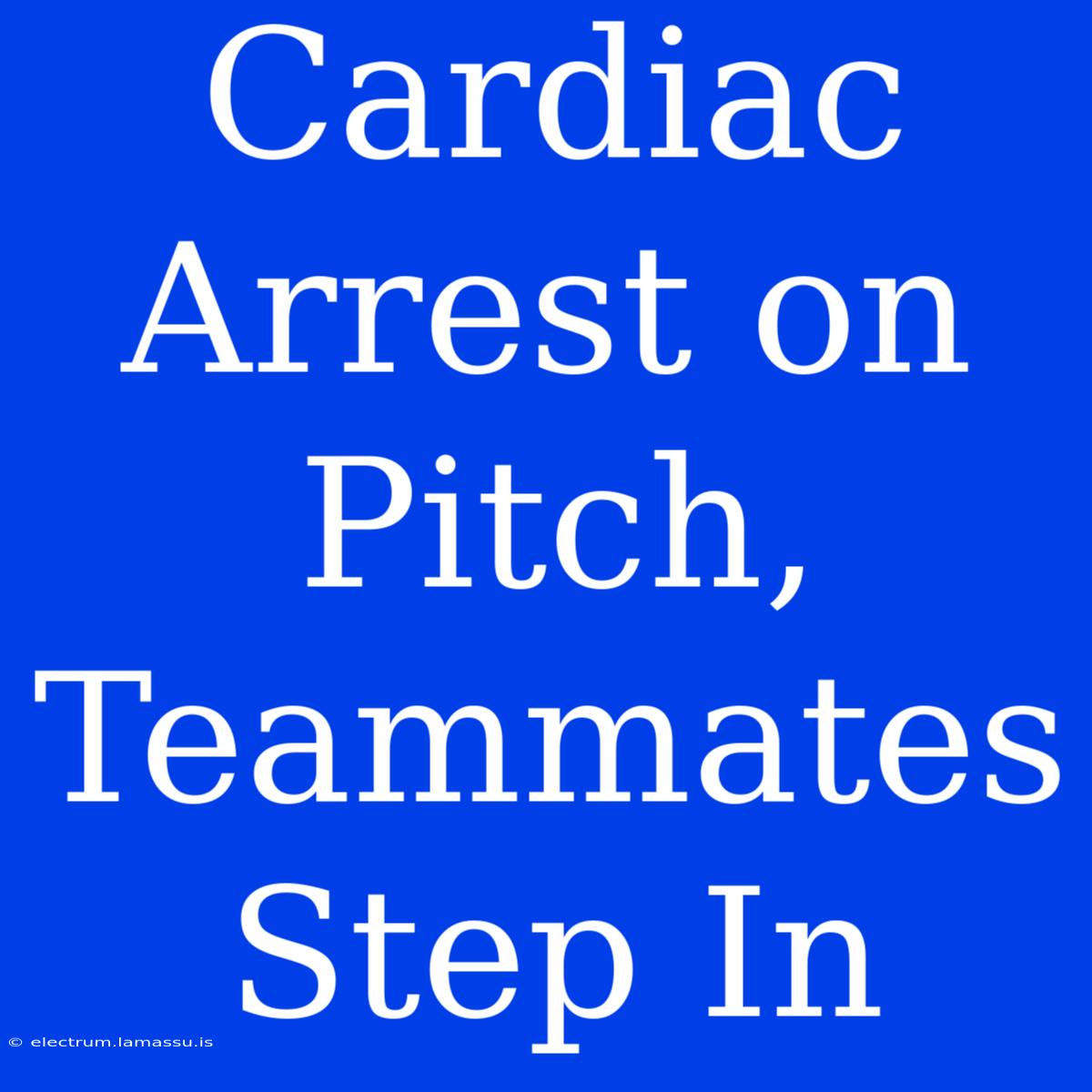Cardiac Arrest on Pitch, Teammates Step In: A Look at the Growing Concern and the Importance of Immediate Action
What happens when a player collapses on the pitch? Why is immediate action so crucial in these situations? Cardiac arrest on the pitch is a growing concern in the world of sports. Editor Note: Cardiac arrest on the pitch is a significant concern for athletes and spectators. This situation highlights the importance of understanding the signs and symptoms of cardiac arrest and the vital role teammates play in saving lives.
This topic is important to read because it offers valuable insights into a potentially life-threatening medical emergency. This review will explore the key aspects of cardiac arrest on the pitch, encompassing the alarming rise in cases, the crucial role of immediate action by teammates, and the evolving medical protocols for responding to such events. We'll also delve into the importance of CPR and defibrillation, along with the increasing use of automated external defibrillators (AEDs) in sports arenas.
Analysis: To compile this comprehensive guide, we analyzed data from various sources, including medical journals, sports organizations, and real-life incidents. We examined the statistics of cardiac arrest cases in athletes, the protocols implemented by different sports leagues, and the impact of early intervention on patient survival rates.
Key Takeaways of Cardiac Arrest on Pitch:
| Aspect | Description |
|---|---|
| Growing Concern | Increasing number of cardiac arrest incidents in athletes |
| Immediate Action | Vital for patient survival, first responders are critical |
| CPR & Defibrillation | Essential life-saving techniques |
| AEDs in Sports Arenas | Increasing prevalence and importance |
| Early Detection and Prevention | Crucial for reducing risk and promoting athlete safety |
Cardiac Arrest on Pitch:
This section highlights the alarming increase in cardiac arrest incidents on the pitch. While rare, these events can have devastating consequences. Cardiac arrest occurs when the heart stops beating effectively, leading to a sudden loss of consciousness. It can occur due to a variety of factors, including underlying heart conditions, genetic predispositions, and even vigorous physical activity.
Teammates Stepping In:
Recognizing the signs of cardiac arrest is paramount, and teammates play a crucial role in this process. A player collapsing on the pitch, exhibiting no signs of breathing or pulse, is a clear indicator of cardiac arrest. In such situations, every second counts. Teammates should immediately call for help and start CPR.
Recognizing the Signs:
- Sudden collapse
- Unconsciousness
- No breathing
- No pulse
Responding to the Emergency:
- Call for Help: Immediately alert medical personnel or dial emergency services.
- CPR: Start chest compressions until help arrives.
- AED: If an AED is available, use it as instructed.
CPR and Defibrillation:
Cardiopulmonary resuscitation (CPR) and defibrillation are vital life-saving techniques. CPR involves manually pumping the heart to circulate blood, while defibrillation uses an electrical shock to reset the heart's rhythm. These procedures are crucial for increasing the chances of survival after cardiac arrest.
AEDs in Sports Arenas:
The increasing use of AEDs in sports arenas is a positive development. AEDs are portable devices that can analyze heart rhythm and deliver an electric shock if needed. They are user-friendly and can be operated by trained individuals, even without medical expertise. The presence of AEDs at sporting events significantly improves the chances of survival after cardiac arrest.
Early Detection and Prevention:
Preventing cardiac arrest is a critical step in safeguarding athletes. Early detection of underlying heart conditions through pre-participation screening and regular medical checkups is crucial. Lifestyle factors such as diet, exercise, and stress management can also contribute to reducing the risk.
FAQ
This section provides answers to common questions related to cardiac arrest on the pitch.
Q: What causes cardiac arrest in athletes? A: Cardiac arrest in athletes can be caused by various factors, including underlying heart conditions, genetic predispositions, and vigorous physical activity.
Q: How common is cardiac arrest on the pitch? A: While rare, cardiac arrest incidents on the pitch are a growing concern in sports.
Q: What is the best way to respond to a cardiac arrest on the pitch? A: Call for help immediately, start CPR, and use an AED if available.
Q: What are the chances of survival after cardiac arrest? A: Early intervention through CPR and defibrillation significantly increases the chances of survival.
Q: What are the long-term implications of cardiac arrest? A: The long-term effects of cardiac arrest depend on the underlying cause and the effectiveness of medical treatment.
Q: How can we prevent cardiac arrest in athletes? A: Early detection through pre-participation screening, regular medical checkups, and lifestyle modifications can reduce the risk.
Tips for Cardiac Arrest on Pitch:
This section provides helpful tips for responding to cardiac arrest on the pitch.
- Be CPR Certified: Learn CPR and AED usage to be prepared for emergencies.
- Know the Signs: Familiarize yourself with the signs of cardiac arrest.
- Call for Help Immediately: Alert medical personnel or dial emergency services.
- Start CPR: Begin chest compressions until help arrives.
- Use an AED: If available, utilize an AED as instructed.
Summary of Cardiac Arrest on Pitch
This article has explored the growing concern of cardiac arrest on the pitch, emphasizing the importance of immediate action by teammates. Recognizing the signs of cardiac arrest, starting CPR promptly, and using an AED if available are essential for saving lives. The increasing use of AEDs in sports arenas is a positive development, further enhancing safety measures.
Closing Message: While cardiac arrest on the pitch remains a rare occurrence, the consequences can be dire. By understanding the signs, learning CPR, and using available resources like AEDs, we can empower ourselves and our communities to respond effectively to these emergencies.

